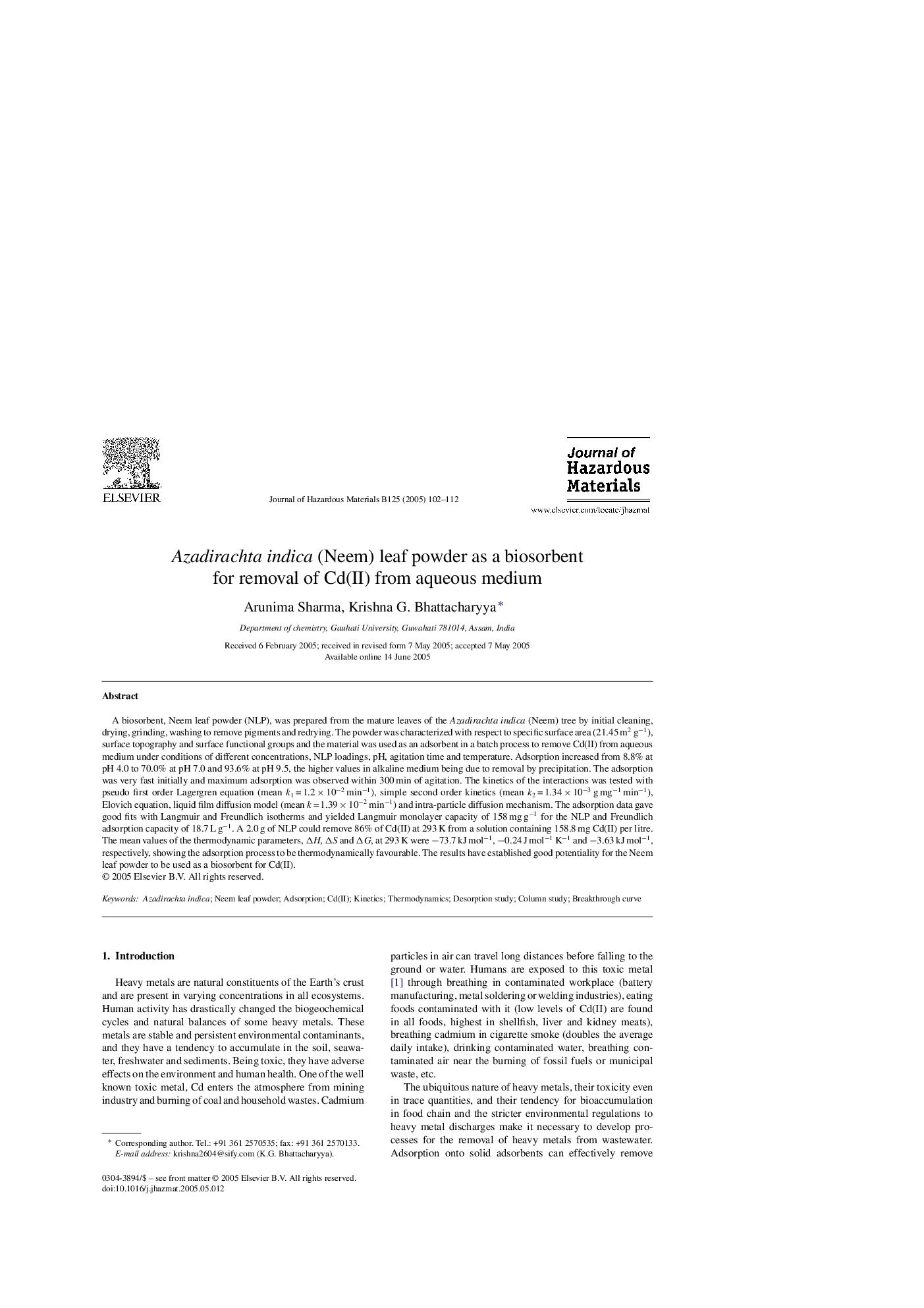| Article ID | Journal | Published Year | Pages | File Type |
|---|---|---|---|---|
| 9674124 | Journal of Hazardous Materials | 2005 | 11 Pages |
Abstract
A biosorbent, Neem leaf powder (NLP), was prepared from the mature leaves of the Azadirachta indica (Neem) tree by initial cleaning, drying, grinding, washing to remove pigments and redrying. The powder was characterized with respect to specific surface area (21.45 m2 gâ1), surface topography and surface functional groups and the material was used as an adsorbent in a batch process to remove Cd(II) from aqueous medium under conditions of different concentrations, NLP loadings, pH, agitation time and temperature. Adsorption increased from 8.8% at pH 4.0 to 70.0% at pH 7.0 and 93.6% at pH 9.5, the higher values in alkaline medium being due to removal by precipitation. The adsorption was very fast initially and maximum adsorption was observed within 300 min of agitation. The kinetics of the interactions was tested with pseudo first order Lagergren equation (mean k1 = 1.2 Ã 10â2 minâ1), simple second order kinetics (mean k2 = 1.34 Ã 10â3 g mgâ1 minâ1), Elovich equation, liquid film diffusion model (mean k = 1.39 Ã 10â2 minâ1) and intra-particle diffusion mechanism. The adsorption data gave good fits with Langmuir and Freundlich isotherms and yielded Langmuir monolayer capacity of 158 mg gâ1 for the NLP and Freundlich adsorption capacity of 18.7 L gâ1. A 2.0 g of NLP could remove 86% of Cd(II) at 293 K from a solution containing 158.8 mg Cd(II) per litre. The mean values of the thermodynamic parameters, ÎH, ÎS and ÎG, at 293 K were â73.7 kJ molâ1, â0.24 J molâ1 Kâ1 and â3.63 kJ molâ1, respectively, showing the adsorption process to be thermodynamically favourable. The results have established good potentiality for the Neem leaf powder to be used as a biosorbent for Cd(II).
Keywords
Related Topics
Physical Sciences and Engineering
Chemical Engineering
Chemical Health and Safety
Authors
Arunima Sharma, Krishna G. Bhattacharyya,
